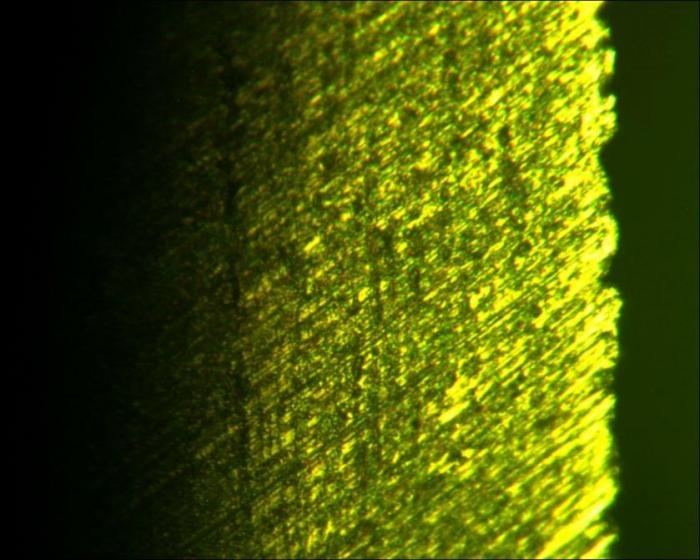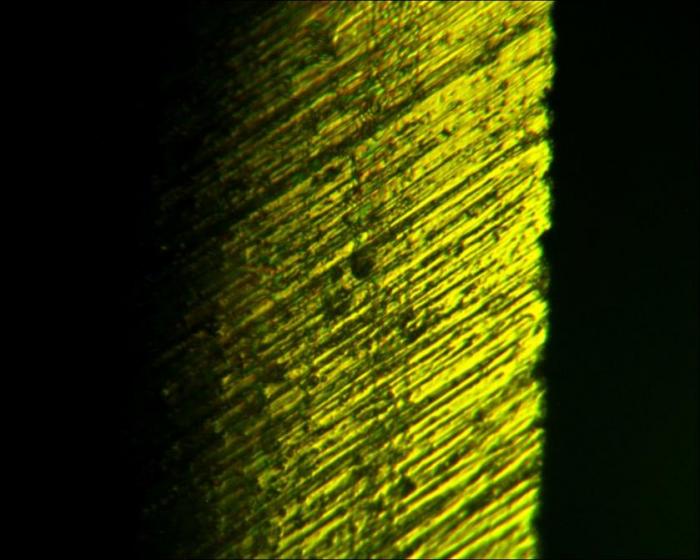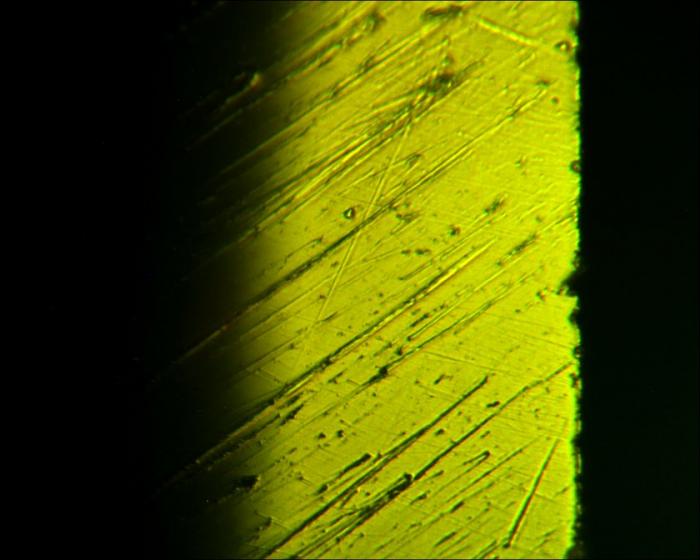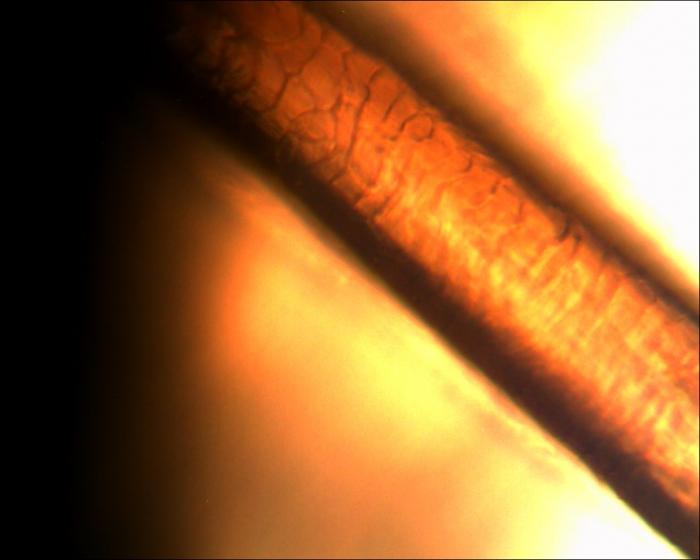Results 1 to 10 of 18
-
05-27-2010, 08:35 AM #1Senior Member

- Join Date
- May 2007
- Posts
- 174
Thanked: 16 Micro Bevels or "How to get your edge bloody sharp off an 8k"
Micro Bevels or "How to get your edge bloody sharp off an 8k"
There was a similar thread on here some time ago but I wanted to revisit the subject in case anyone hasn't yet tried it.
I have a lovely rather lovely Dovo Black star but it dropped out of my rotation a few months ago after I got hold of a TI which practically hones itself. Yesterday, I thought "no more!" and decided to try giving it a micro-bevel which I'd seen suggested on here - where one would hone as normal then to finish, complete a small number of laps on a super fine stone with the spine taped.
Not owning a super fine stone, I just honed as normal on a norton 4/8k before taping the spine and completing 15 more laps on the 8k.
Now, I have to say, this razor went from shaving like a cheesegrater to feeling like i was rubbing a block of butter over my face. I see no reason why everyone shouldn't use this wonderful technique!
-
-
05-27-2010, 09:10 AM #2

Nice one! Yep, those micro bevels are very effective, and really make an edge smooth. Glad it worked well for you..!

-
05-27-2010, 01:22 PM #3

The only reason I have yet to use a microbevel is because I already tape the spine of my razors. This means I would have to go up to two layers of tape to get a microbevel and then continue to use two layers for touch ups and such. This seems like to much work,imo, but I am curious.
Nice job
-
05-27-2010, 10:15 PM #4Robert Williams Custom Razors


- Join Date
- May 2005
- Location
- East Liverpool, Ohio
- Posts
- 971
Thanked: 324
Pasted strops give such good results because they flex and polish out a microbevel. You don't need to alter your honing angle at all to create a very fine microbevel if you give it a good going over with a pasted strop.

-
The Following 4 Users Say Thank You to PapaBull For This Useful Post:
Disburden (05-28-2010), DwarvenChef (05-28-2010), JeffR (06-01-2010), mrsell63 (05-28-2010)
-
05-28-2010, 06:49 PM #5

In my view using additional tape to create microbevel is one way to compensate for a subpar honing technique. Using progressively finer hones should create uniform and polished bevel, but if one cannot maintain good strokes or doesn't complete the work on a coarser hone before switching, the very edge will have various defects and will not shave well.
Using a few strokes on a fine grit hone at a slightly increased angle can remove these defects, but the razor can be exactly as good with simple straightforward honing too.
I can probably find a couple of photographs to illustrate this.
-
The Following User Says Thank You to gugi For This Useful Post:
Disburden (05-28-2010)
-
05-28-2010, 07:59 PM #6wannabe straight razor user


- Join Date
- May 2010
- Location
- Breda, the Netherlands
- Posts
- 109
Thanked: 18
I agree. It can also be a choice to protect your razor's spine.
I do not have any experience with shaving str8's, but lots with knives and it is the same there, a microbevel is easy to put on but ultimately it also means you don't have to polish your bevel to the best of your ability.
-
05-31-2010, 06:32 PM #7

This becomes almost a Philosophical argument. Many western workers use micros to save time and stone. Get the bevel close then pay attention to what really counts and that is the edge. Ultra fine stones and films in the micro equation virtually eliminate heavy strop work other than to dry the edge after a shave. This was not always possible under previous tradition.
Eastern Philosophy believes the whole edge should be true.
Really, there is no right or wrong, it is what works for you. Getting the best shave by whatever means is the only correct answer.
-
-
05-31-2010, 06:47 PM #8

I guess I would agree with that Mike. However, knowing of your study of the double bevel with the 30k, I draw your attention to this surprising post ( to me anyway) by Tim Zowada here.
 Be careful how you treat people on your way up, you may meet them again on your way back down.
Be careful how you treat people on your way up, you may meet them again on your way back down.
-
05-31-2010, 07:22 PM #9

I agree with both Gugi and Kingfish - creating a "double bevel" will make up for any errors or insufficiency in your work on early hones, but that does not make it "wrong." I'd say it's more of a shortcut. It would be interesting to see how edge life changes with a single bevel vs a double bevel and if an "insufficient" primary bevel and then a double bevel effects the edge life at all.
RE Tim's post that Jimmy liked to, I think it's just a question of vocabulary. As I read it and express my though, Tim seems to be talking about a micro bevel, which I would classify as a type of double bevel. I guess there is no standard language for this sort of thing...
-
05-31-2010, 07:35 PM #10Robert Williams Custom Razors


- Join Date
- May 2005
- Location
- East Liverpool, Ohio
- Posts
- 971
Thanked: 324
I have very good reason to believe that no matter how fine the hone, a microbevel must be established before the edge has been truly finished. But when I'm talking about a "microbevel", I'm not talking about one set by a stone. I believe that would create more problems than it would fix. I'm talking about the microbevel that is naturally created when you strop your razor on a pasted strop or, believe it or not, bare leather.
Straight off the hone, there are virtually always going to be microchips that are way, way, way beyond the ability of the naked eye to pickup and this is because of the structure of steel and the carbides it holds. The microbevel created by stropping, polishes this very tip of the razor's edge at a slighly more obtuse angle than the stone created. It burnishes off and smoothes out the micro-chips in the structure at the blades farthest edge.
Here are some pictures to illustrate what I'm talking about.
Here is a razor off a very fine Japanese stone with a completely set bevel at 640x magnification.

Here is the very same segment of the blade after going on to Chromium Oxide. this picture is at 160x magnification and you can see the change in color from the haze of the Japanese to the more polished microbevel being formed at the edge.

Here is this section at 640 x magnification to show how the Chromium oxide cleaned up the edge throughout the microbevel that was formed.

Here is a picture of the edge at 640x after being stropped on a leather strop, which finished the polishing. The edge has very little "texture" and the scratch patterns have been polished out almost completely, leaving a very clean bevel and the edge is much nicer even though there are still some microscopic "jagged edges". These were softened and rounded out a bit.

And here is a very fine hair from my wife's head (picked it out of a hairbrush) just to provide perspective. Facial hair is much, much thicker. I don't have any to pluck and photograph, though. This is 640x magnification.

-


 2Likes
2Likes LinkBack URL
LinkBack URL About LinkBacks
About LinkBacks






 Reply With Quote
Reply With Quote



